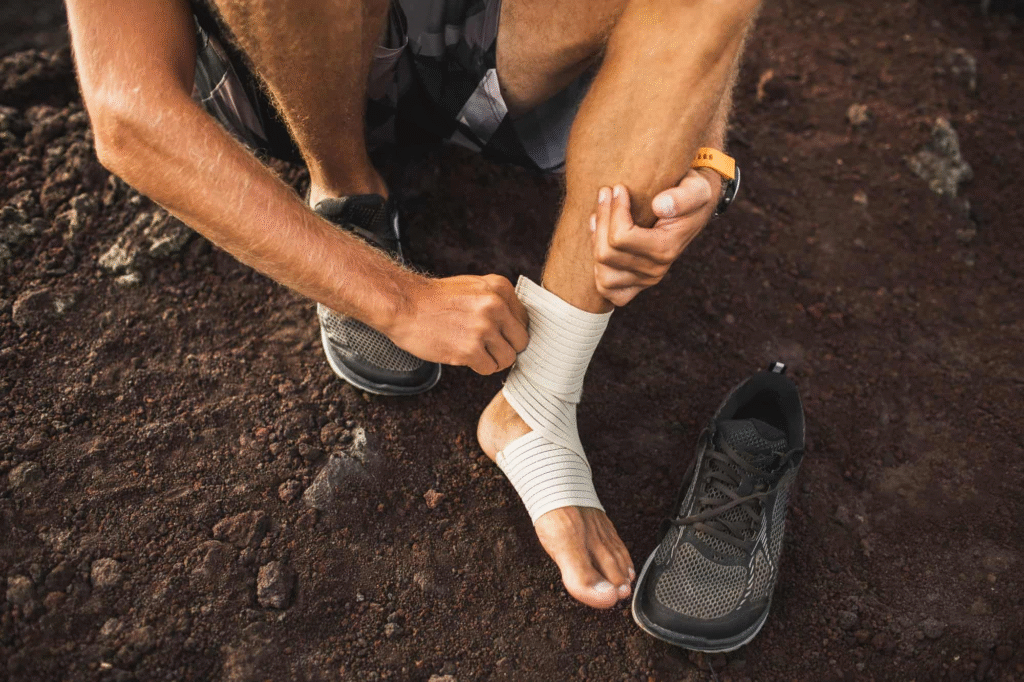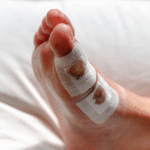Plantar fasciitis is one of the most common causes of heel pain, and if you’ve ever experienced it, you know how uncomfortable it can be. That sharp pain when you take your first steps in the morning or after sitting for a long time can make everyday tasks challenging. While medical treatments exist, many people want to explore safe and effective plantar fasciitis home remedies that work before considering injections or surgery.
This article breaks down simple, practical, and proven remedies you can try at home. We’ll cover natural approaches, lifestyle changes, stretching routines, and self-care tips to help relieve pain and speed up healing.
Understanding Plantar Fasciitis
The plantar fascia is a thick band of tissue running across the bottom of your foot, connecting your heel bone to your toes. Its job is to support your arch and absorb shock when you walk. When it becomes irritated or inflamed, the condition is known as plantar fasciitis.
Common Symptoms:
- Sharp heel pain, especially in the morning
- Pain that worsens after standing for long periods
- Stiffness in the arch or bottom of the foot
- Discomfort after exercise or activity
Risk factors include wearing unsupportive shoes, sudden increases in physical activity, being overweight, or having flat feet or very high arches.
Why Home Remedies Can Help
Plantar fasciitis doesn’t usually require surgery or complicated treatments. In fact, about 90% of cases improve with conservative care when people are consistent with home remedies. These approaches reduce inflammation, stretch tight tissues, and support healing. Best of all, they’re inexpensive and easy to do.
Effective Plantar Fasciitis Home Remedies That Work
1. Rest and Activity Modification
Giving your feet a break is essential. If you’ve been walking, running, or standing a lot, reduce those activities for a while. Rest doesn’t mean you should stop moving completely—it means avoiding high-impact actions that worsen the pain. Switch to low-impact exercises like swimming or cycling until your heel improves.
2. Ice Therapy
Applying ice is one of the simplest ways to reduce inflammation and numb pain. You can:
- Use a frozen water bottle and roll it under your foot for 10–15 minutes.
- Place an ice pack on your heel after activity.
Doing this 2–3 times a day can significantly relieve discomfort.
3. Foot Stretches and Exercises
Stretching helps loosen the plantar fascia and Achilles tendon, reducing strain. Some helpful stretches include:
- Calf Stretch Against Wall: Place your hands on a wall, step one foot back, and press your heel down. Hold for 20 seconds.
- Towel Stretch: Sit down, loop a towel around your foot, and gently pull your toes toward you.
- Toe Curls with Towel: Place a towel on the floor and use your toes to scrunch it up.
Consistency is key—perform these stretches daily.
4. Massage Techniques
Massaging the arch of your foot increases blood flow and helps break down tension in the fascia. You can:
- Use your thumbs to gently press along the bottom of your foot.
- Roll a tennis or massage ball under your arch for 5–10 minutes.
This technique is especially soothing after a long day of standing.
5. Supportive Footwear
Shoes make a huge difference. Walking barefoot on hard surfaces can worsen plantar fasciitis. Instead:
- Wear shoes with cushioned soles and good arch support.
- Avoid high heels and completely flat shoes.
- Consider orthotic inserts or heel cups for extra support.
6. Night Splints
A night splint holds your foot in a stretched position while you sleep, preventing your plantar fascia from tightening overnight. Many people report less morning heel pain when using them consistently.
7. Weight Management
Carrying extra weight puts more pressure on your feet. Even losing a few pounds can reduce stress on the plantar fascia and speed up recovery. Pairing home remedies with a balanced diet and gentle exercise can make a big difference.
8. Epsom Salt Soaks
Soaking your feet in warm water with Epsom salt may help relax muscles and ease discomfort. While it won’t cure plantar fasciitis, it can provide temporary relief and relaxation.
9. Over-the-Counter Pain Relief
If the pain becomes too much, non-prescription options like ibuprofen or acetaminophen can reduce inflammation and pain. However, these should only be a short-term solution and not a replacement for lifestyle changes.
10. Consistency Is Key
No single remedy will cure plantar fasciitis overnight. The best results come from combining several of these methods and sticking with them for weeks or even months. Healing is gradual, but most people experience noticeable improvement within 3–6 months.
When to See a Doctor
While home remedies work for many, sometimes medical help is needed. You should consult a doctor if:
- Your pain is severe or worsening
- You cannot walk without limping
- Home remedies haven’t improved symptoms after several months
- You notice swelling, numbness, or tingling
Doctors may recommend physical therapy, corticosteroid injections, or in rare cases, surgery.
Table: Quick Overview of Plantar Fasciitis Home Remedies
| Remedy | How It Helps | How Often to Try |
|---|---|---|
| Rest | Reduces strain on fascia | Daily as needed |
| Ice Therapy | Decreases inflammation | 2–3 times/day |
| Stretches | Improves flexibility | Daily |
| Massage | Boosts blood flow, reduces tension | Daily |
| Supportive Shoes | Provides cushioning and support | Every day |
| Night Splints | Prevents morning stiffness | Nightly |
| Weight Management | Reduces pressure on feet | Ongoing |
| Epsom Soaks | Relaxes muscles | Few times/week |
Conclusion
Living with plantar fasciitis can be frustrating, but the good news is that there are plenty of plantar fasciitis home remedies that work. From rest and ice to stretches and supportive footwear, these natural solutions can make a big difference in your recovery journey. The key is to be consistent and patient. Most people see significant improvements with these conservative methods, and only a small percentage require medical interventions. By taking care of your feet today, you can prevent long-term pain and get back to enjoying daily life without discomfort.
FAQs About Plantar Fasciitis Home Remedies
1. How long does it take for home remedies to work for plantar fasciitis?
Most people notice improvement within a few weeks, but full recovery may take 3–6 months with consistent care.
2. Can plantar fasciitis go away on its own?
Yes, in many cases it can resolve without medical treatment, especially if you follow home remedies and avoid activities that strain your feet.
3. Are flip-flops bad for plantar fasciitis?
Yes, most flip-flops lack arch support and cushioning, which can make symptoms worse. Supportive sandals are a better option.
4. Should I keep walking if I have plantar fasciitis?
Light walking is usually okay, but avoid long distances or high-impact activities until your symptoms improve.
5. Can stretching alone cure plantar fasciitis?
Stretching is very helpful, but for best results, combine it with other remedies like proper footwear, rest, and ice therapy.



